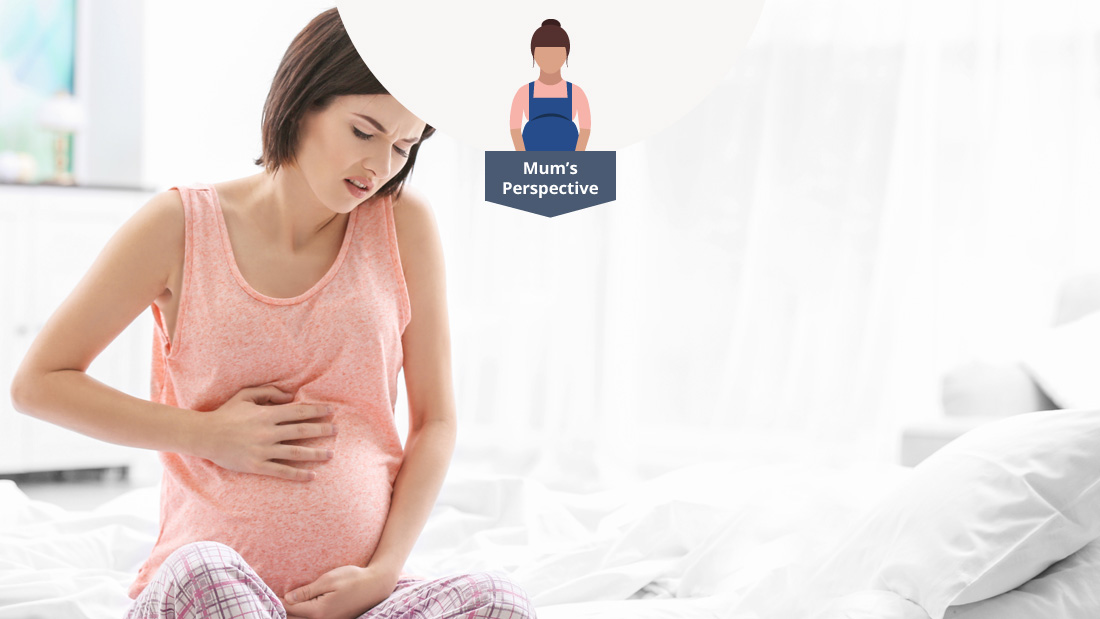
Symphysis pubis dysfunction
Suffering symphysis pubis dysfunction (SPD) (now known as pelvic girdle pain) in pregnancy can be painful, distressing and, if sever, can cause problems during the birth.
Here, a mum who suffered from excruciating SPD reveals how being well-informed and prepared, led to a, thankfully, uncomplicated birth and recovery.
Symphysis pubis whatchamacallit?
When I first saw those two telltale lines on the pregnancy test, I’d never even heard of symphysis pubis dysfunction (SPD), and little did I know that it would characterise so much of my pregnancy and ultimately leave me feeling anxious about my labour.
My first few weeks of being pregnant were great, no morning sickness, no tiredness. I felt brilliant.
Then, at some point towards the end of the first trimester I started developing significant hip pain. At the early stage it was at its worst when I had to rise from my seat on the bus back from work and walk the half mile, or so, home.
Things moved fast. By the middle of the second trimester, my hip pain was so excruciating that I was forced to stop travelling into work and my bedroom became my office, from where I was able to work from my king-sized bed and, occasionally, the dressing table, with my kettle and coffee maker now situated on my bedside table.
This was really difficult for me. Although I am a very independent person, I thrive off being in the social environment of the workplace. To find myself both housebound and dependent on others really lowered my spirits. Fortunately though, I knew that I was moving towards a purpose: my baby would be born in October and things would, statistically, be alright shortly after then.
Approaching labour
I knew that my pubic symphysis joint would have to widen to accommodate baby and that labour and childbirth would inevitably place a strain on my pelvis. I’d even heard horror stories about women who became paralysed as a result of giving birth with SPD.
Fortunately, my partner was really supportive and made sure that he was even better versed in how to negotiate the labour than I was.
This made a major difference: I knew I could rely on Oliver to bring everything I needed and, importantly, to remind the midwives of my predicament when we eventually went into the maternity unit.
As such, he was ready to be leaned on (both literally and metaphorically) and came to the delivery suite equipped with a good collection of pillows, which I variously rested against, positioned my hands and knees on and placed between my legs while lying on my side (yes, you can guess that I did have difficulty getting comfortable).
We had practiced all of these positions beforehand and Oliver had even spoken with the physiotherapist on his own and then drawn himself some diagrams of the labour to make sure that, every step of the way, the midwives knew that I was comfortable and that I shouldn’t ever be put in stirrups or made to spread my legs too far.
Fortunately, my SPD was not so severe that I was unable to get in and out of a birthing pool. This meant that as soon as one became free at the hospital, we were able to take advantage.
I don’t know why, perhaps it was the warming and calming effect of the water, but I almost can’t remember what happened at this stage. All I know is that within an hour of getting into the birthing pool, Harry was born underwater. For various personal reasons, I didn’t want any hardcore pain relief (an epidural is not always a good idea with SPD anyway as you are unable to feel the limits of your pelvic pain) and, gas and air aside, actually managed to achieve a completely natural birth. I feel really lucky that I was able to achieve this as I know that so many women with SPD have to have caesarean sections or worse.
It is now two years on and although I cannot claim to be completely recovered, as I still have some residual back ache, I feel confident that through a careful regime of gentle yoga, pilates and walking, I am getting there.


